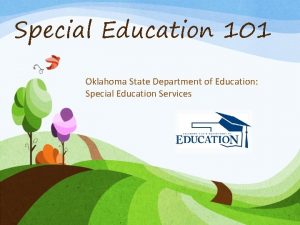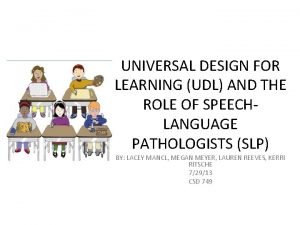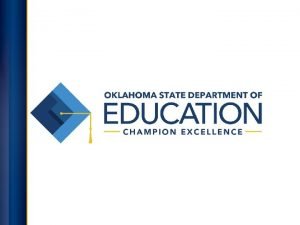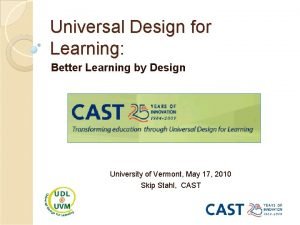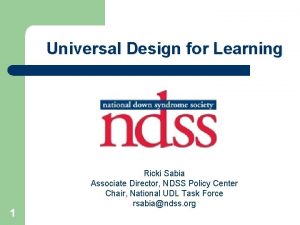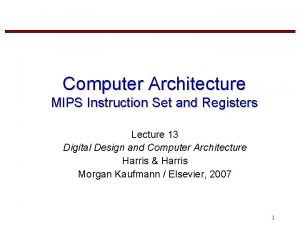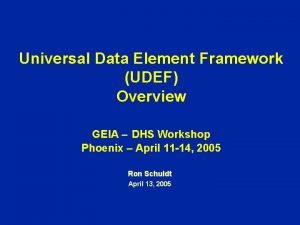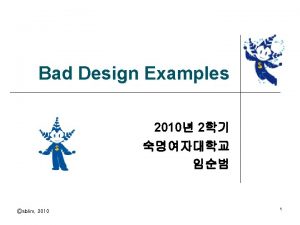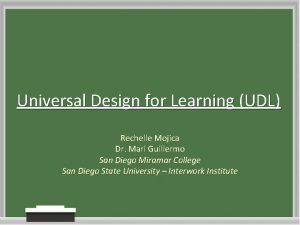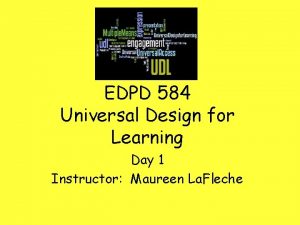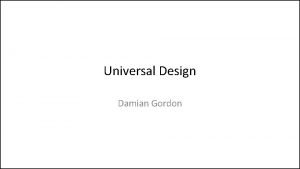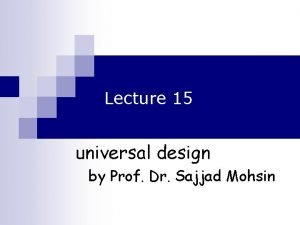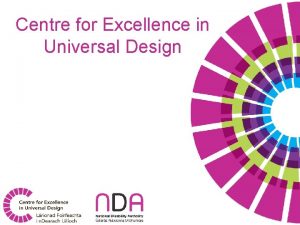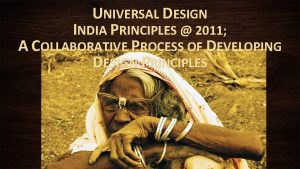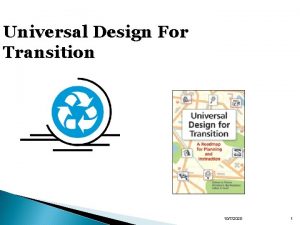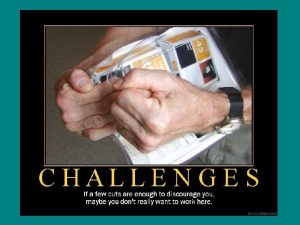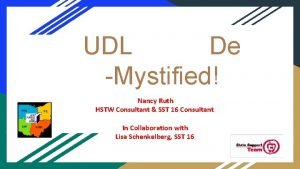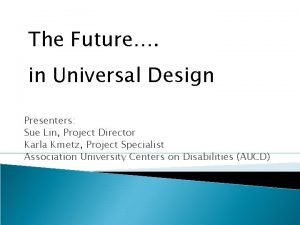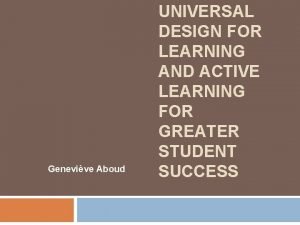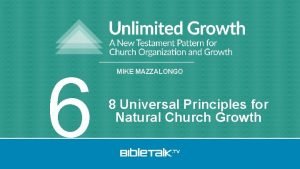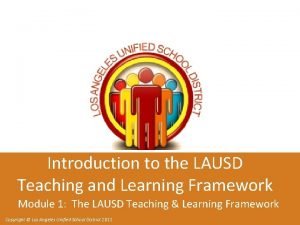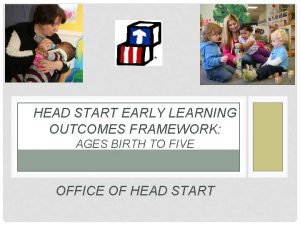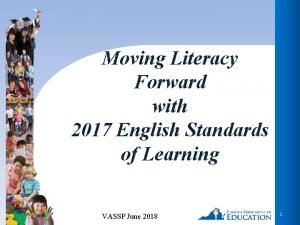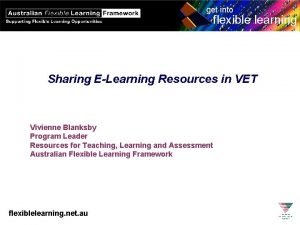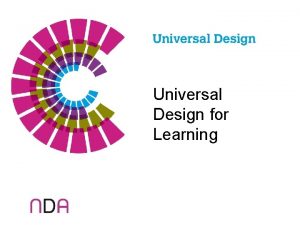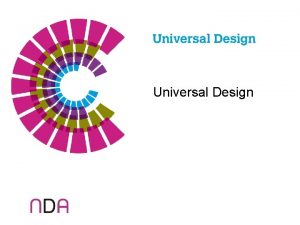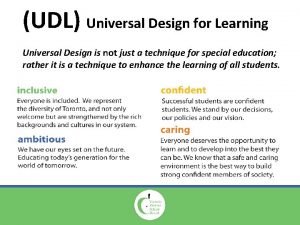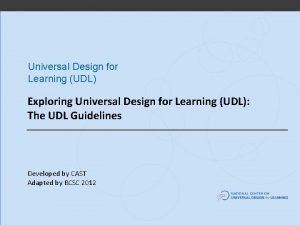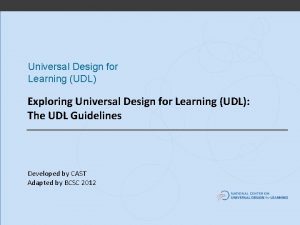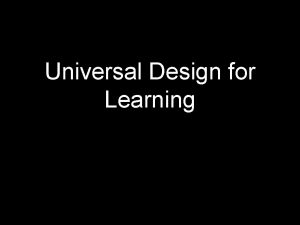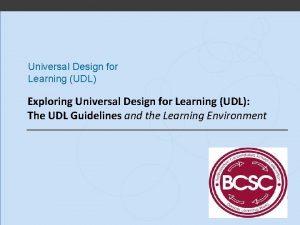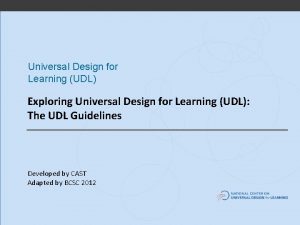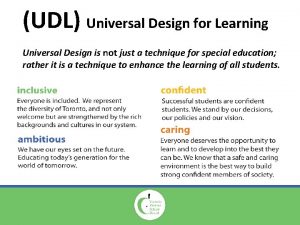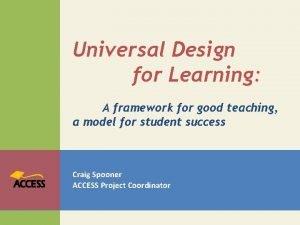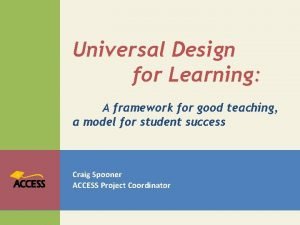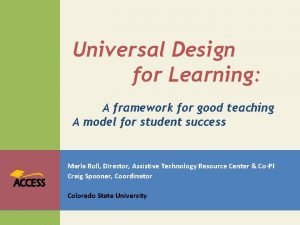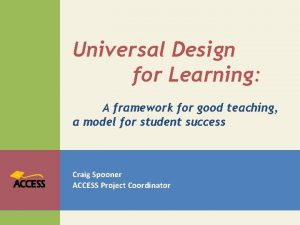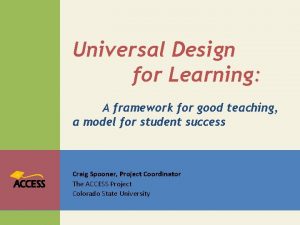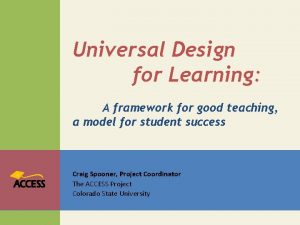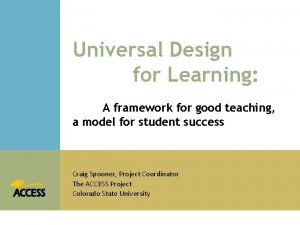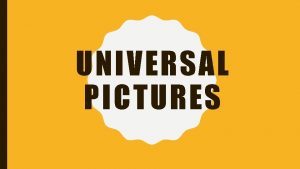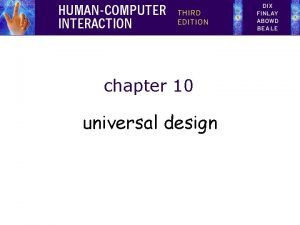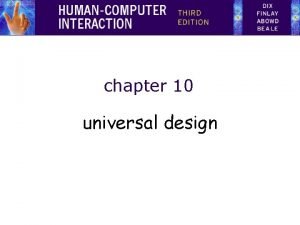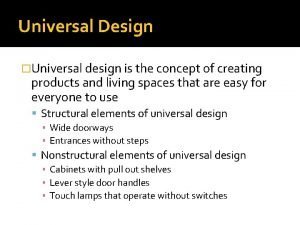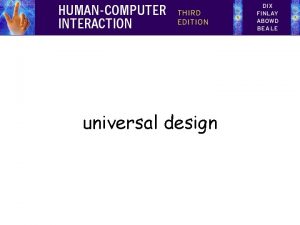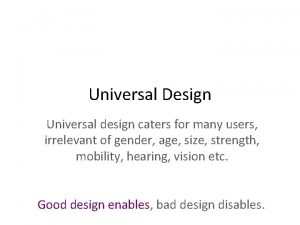Universal Design for Learning A framework for good






































- Slides: 38

Universal Design for Learning: A framework for good teaching, a model for student success Craig Spooner, ACCESS Project Coordinator The ACCESS Project, Colorado State University

Objectives What is UDL? Who benefits from it? How can it be implemented?

BIG Question #1 Who are your students?

Student diversity Ethnicity & Culture ESL/Native language Nontraditional Gender Learning Styles Disabilities

Ethnicity & Culture* Minority International *CSU Facts at a Glance, 2009 -2010 CSU Students CSU Faculty 13. 6% 12. 8% 3. 5% 4. 7%

ESL / Native Language Potential barriers to comprehension For both students and instructors Affects written and verbal communication

Language Quiz What is your good name, sir? A. Full name B. Last name C. Nickname or pet name

Language Quiz I say there are 100 Krore stars in the sky. You say the stars number 10, 000 Lakh. Do we agree?

Nontraditional Students Percentage of undergraduates with nontraditional characteristics: 1992– 93 and 1999– 2000

Nontraditional Students Highly motivated & Achievement oriented Integrate learning with life and work experiences Finances and family are two of the biggest concerns Strong consumer orientation Need flexible schedules Want applicability to the real world Prefer more active approaches to learning Relatively independent Lack of a cohort, “student life” experience

Men & Women* 12, 000 10, 896 Men 10, 308 Women 10, 000 8, 000 6, 000 4, 000 1, 766 2, 000 1, 905 130 408 0 Undergraduate *CSU Facts at a Glance, 2009 -2010 Graduate Veterinary Medicine

Learning Styles 1. Visual a) b) Visual-Linguistic (reading and writing) Visual-Spatial (graphs and pictures) 2. Auditory (listening) 3. Kinesthetic (touching and moving)

Disabilities Both short-term and long-term, apparent and non-apparent Mobility Impairments Blindness/Visual Impairments Deafness/Hearing Impairments Learning Disabilities Attention Deficit Disorder (ADD/ADHD) Autistic Spectrum Disabilities Traumatic Brain Injury (TBI) Post Traumatic Stress Disorder (PTSD)

Disabilities National statistics: Colorado State University 11. 3% of undergraduates report some type of disability* 8%– 11% (ACCESS research, 2007 -10) Non-apparent disabilities are by far the largest proportion and growing Only a small percentage seeks accommodations *National Center for Education Statistics, 2008; U. S. Government Accountability Office, 2009

Universal Design for Learning “ Universal Design for Learning is a set of principles and techniques for teaching creating inclusive classroom instruction technology and accessible course materials. ”

History of UDL Universal Design (UD) Accommodate the widest spectrum of users without the need for subsequent adaptation Public buildings, city streets, television, kitchen utensils… Universal Design for Learning (UDL) Inclusive pedagogy Applies to both teaching and technology

UDL and Teaching 1. Represent information and concepts in multiple ways (and in a variety of formats). 2. Students are given multiple ways to express their comprehension and mastery of a topic. 3. Students engage with new ideas and information in multiple ways.

Representation

Representation Ideas and information are represented in multiple ways and in a variety of formats Lectures Group activities Hands-on exercises Text + Graphics, Audio, Video Usable electronic formats (e. g. , Word, PDF, HTML)

UDL and Technology Educational Videos Course Materials Lecture Presentation Systems Course Management Systems

What makes a document Universally Designed? Searchability Copy and Paste Bookmarks or an Interactive TOC Text to Speech capability Accessibility

UDL Tech Tutorials Microsoft Word Styles and Headings Images Power. Point Adobe PDF HTML E-Text http: //accessproject. colostate. edu

Expression

Expression Students express comprehension and mastery in multiple ways Oral presentation Written essays Projects/Portfolios/Journals Performance Multimedia (text/graphics/audio/video)

Expression Colin from our video Student with Quadriplegia Undergraduate in Landscape Architecture Assignment: Create a 3 D model Physical model Computerized model

Engagement

Engagement Help students “engage” in multiple ways Express your own enthusiasm! Challenge students with meaningful, real-world assignments Give prompt and instructive feedback on assignments Classroom response systems (clickers) Make yourself available to students during office hours in flexible formats

Engagement Professor from India has students video tape Q&A during office hours Individual questions answered for everyone in the course Video Written explanation

What’s so special about UDL?

Represent UDL Framework E ng e g a Exp res s

BIG Question #2 Who are your students? What are our institution’s goals?

CSU’s Strategic Goals Goal 5: Access, Diversity, and Internationalization Goal 6: Undergraduate Curriculum and Advising 6. 2: Enhance programmatic accessibility for students with physical, learning and other disabilities Goal 7: Active and Experiential Learning Opportunities Goal 10: Student Engagement Outcomes (curricular and co-curricular)

CSU’s Strategic Goals Goal 9: Learning Outcomes critical thinking writing Goal 8: Retention and Graduation CSU’s first-year retention rate: 82% 6 -year graduate rate: 63%

BIG Question #3 Who are your students? What are CSU’s Goals? What’s your Instructional Philosophy?

Instructional Philosophy How do you conceptualize knowledge? What is your role in the transmission of knowledge? What constitutes student learning? What learning objectives have you set for them, and how do you know when they’ve been achieved?

Recommended Video http: //www. cornell. edu/video/? Video. ID=225

Published Resources Burgstahler, S. , & Cory, R. (2008). Universal design in higher education from principles to practice. Cambridge, MA: Harvard Education Press. Rose, D. H. , Harbour, W. S. , Johnston, C. S. , Daley, S. G. , & Abarbanell, L. (2006). Universal design for learning in postsecondary education: Reflections on principles and their application. Journal of Postsecondary Education and Disability, 19(2), 135151.

Thank you! ACCESS Website: accessproject. colostate. edu Craig Spooner craig. spooner@colostate. edu 970 -491 -0784 The ACCESS Project, Colorado State University Funded by U. S. Dept. of Education, Office of Postsecondary Education, Grant #P 333 A 080026
 504 plan oklahoma
504 plan oklahoma Udl
Udl Universal design for learning
Universal design for learning Universal design for learning
Universal design for learning Universal design for learning
Universal design for learning Good deeds good words good thoughts
Good deeds good words good thoughts Hello everyone good evening
Hello everyone good evening Good afternoon buenas tardes
Good afternoon buenas tardes You are good you are good when theres nothing good in me
You are good you are good when theres nothing good in me Hello teacher good afternoon
Hello teacher good afternoon Good design demands good compromises
Good design demands good compromises Cuadro comparativo entre e-learning b-learning y m-learning
Cuadro comparativo entre e-learning b-learning y m-learning Life sciences universal data framework
Life sciences universal data framework Bad mapping design examples
Bad mapping design examples Dispositional framework vs regulatory framework
Dispositional framework vs regulatory framework Theoretical and conceptual framework
Theoretical and conceptual framework Franmework
Franmework Conceptual framework theoretical framework
Conceptual framework theoretical framework Dispositional framework vs regulatory framework
Dispositional framework vs regulatory framework Theoretical framework example
Theoretical framework example Universal design san diego
Universal design san diego Universal design methods
Universal design methods Universal design
Universal design Universal design in hci
Universal design in hci Centre for excellence in universal design
Centre for excellence in universal design Universal design india principles
Universal design india principles Universal design for transition
Universal design for transition Retecient
Retecient Universal design adalah
Universal design adalah Universal design
Universal design Universal design
Universal design Universal principles of design
Universal principles of design Learning outcomes example
Learning outcomes example Teaching and learning framework lausd
Teaching and learning framework lausd Head start early learning outcomes framework
Head start early learning outcomes framework Early years learning framework overview
Early years learning framework overview 2017 english standards of learning curriculum framework
2017 english standards of learning curriculum framework Australian flexible learning toolbox
Australian flexible learning toolbox Hcsw
Hcsw
